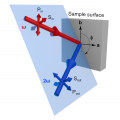When certain metals are cooled to low temperatures, the electrons within form pairs that condense into a single quantum state. This superconducting phase exhibits a number of striking features, including electrical conduction without resistance and the expulsion of magnetic fields. Recently, a new class of superconductors has been predicted to exist with unique pairing symmetries. Astoundingly, these "topological" superconductors can potentially be harnessed to build a quantum computer that is immune to environmental noise. Towards this goal, our group is interested in discovering, characterizing, and engineering new unconventional superconductors.









